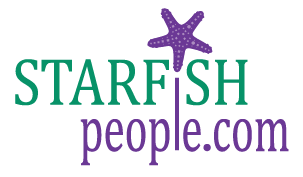With Brexit looming and AI threatening to replace roles, assessment now has a broader role to play in resolving key talent challenges in the financial services sector, says Andreas Lohff from assessment specialist cut-e.
Fears that jobs and operations may be relocated out of Britain because of Brexit are fuelling a recruitment crisis in the financial services sector. And it’s not just concerns around moving offices elsewhere that’s fuelling confusion around careers in the sector – just this week, a group of leading finance executives warned that as many as half of the sector’s jobs could be lost to artificial intelligence.
Other sectors, such as technology, offer a real alternative to talented candidates. Against this backdrop, the question that many leaders in financial firms are now asking is: How can we attract and recruit top candidates, now that we’re competing for talent with many more industries?
To answer this, McLagan conducted a survey of the talent management practices at 265 financial services firms.
Improving Performance
Its report highlights the three biggest HR challenges in the industry:
1. the retention of key talent
2. talent attraction
3. leadership development
Firms are focusing on retaining their key talent by improving their performance management processes and by fostering a culture that more closely aligns with their strategic priorities.
However, attracting talented performers – and getting recruitment right the first time – is proving a tougher nut to crack. For many firms, talent sourcing and selection are high priorities. Yet, surprisingly, only 47% of the surveyed firms use any formal assessment tools for hiring.
The science of assessment has developed incredibly quickly in the last few years. The most effective tools predict critical outcomes such as performance, engagement, values fit and retention. They can also improve the speed and efficiency of your hiring process. Static employee tests developed decades ago have been replaced with adaptive assessments that offer a distinct competitive edge.
It’s not just the type of assessment that’s changed, but how assessments are offered to candidates.
Going mobile
Of those firms that utilise assessments for hiring, hardly any are leveraging the latest technology. Only 7% are using mobile assessments. This is a big mistake given that mobile phones are not just indispensable aids, they’ve become a fundamental part of our lives. For millennial’s, their phone is central to their lifestyle, much more so than their laptop.

This is relevant because, according to PWC, 50 percent of your workforce will be millennials by 2020.
You need to attract, recruit and retain them – and phones are their preferred device. So unless you’re equipped to enable talented candidates to take assessments via their phones, particularly in high-volume recruitment situations, you risk losing them to competitors – especially to those technology companies that often top graduate job lists.
Assessment is not only about finding the best talent, it can also help you to identify new skills that haven’t been focused on before. Roles in financial services firms are evolving and so are the skills needed to fulfill them.
Advances such as roboadvisors/chatbots and automated tellers are beginning to have an impact on both consumers and how we work. While there are different opinions on the pace of automation, there is little disagreement on the impact it will have on the workforce. Tomorrow’s talent will need to embrace technology, collaborate with others and work effectively in a modern, digital environment.
This means that financial services firms will need to assess specific digital competencies, including learnability, agility, and curiosity. This demands a methodical approach. Recruitment can no longer be left to the ‘gut feel’ of your hiring managers. If you’re not using assessments in your selection, you should rectify this. If you do already use assessments, review your portfolio to ensure your tools are providing a nuanced picture of each candidate’s personality, behavior, work style, and ability.
The latest options include gamified assessments, video assessments and mobile enablement. Aim to impress your candidates with a slick and easy assessment experience. You can measure the ROI of your assessments – and create useful talent analytics – by linking people’s assessment results to their subsequent performance in the role.
Identifying leaders
Assessments can also help you to develop your existing leaders and to select internal candidates for succession planning. The risks of dysfunctional leadership are not just bad publicity and damaged brands, but real monetary costs. Succession planning is about business continuity and mitigating organisational risk. But, in many financial services firms, leadership development is either non-existent or it’s an exercise in box-ticking.
Less than half of McLagan’s surveyed firms formally manage succession. Most do not complement their leadership development programmes with talent assessments. These can provide leaders with a focus for their development, by identifying any gaps in the desired skills and traits.
Building a ready pool of future leaders will reduce the risk of critical positions going unfilled. However, caution needs to be applied here. What makes someone successful in one role does not necessarily translate to the next rung up the leadership ladder. So you need to be clear on what specific competencies and qualities you want to assess.
In today’s organisations, assessment now has a value beyond recruitment. It’s not just about maximising the person-job match and minimising the risk of early attrition or the expense of making a bad hire. Assessments – and the resultant data – can transform your talent management practices and resolve your top HR challenges. The procurement decision for assessment has never been more important.
Starfishpeople can produce a DISC Profiles that will help you build the best sales team you could possibly have, and you can start retaining good people because you understand more and will know how to show an interest in each and every person, as well as their unique qualities they bring to the table.
We have also introduced a report giving you a four-dimensional view of those you are working with, hiring, training, or just interacting with on a regular basis.
Why settle for a snapshot when you can get the complete full four-dimensional view with depth?
In practice, it brings the already detailed two-dimensional DISC report into living color in four dimensions.
We recommend the 4D report for Recruiting, Team Building or for Leadership Development.
If you haven’t experienced your 4D view, start today by taking ACTION!
Looking to understand more about how we can help through improved Retention, Recruitment and Business Coaching ?. You can contact us by filling out the secure contact form or send us an email [email protected]


